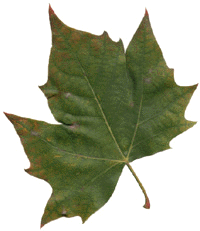...Best of Sicily presents... Best of Sicily Magazine. ... Dedicated to Sicilian art, culture, history, people, places and all things Sicilian. |
by Maria Mazzaro | |||
Magazine Index Best of Sicily Arts & Culture Fashion Food & Wine History & Society About Us Travel Faqs Contact Map of Sicily
|
Apart from the chestnut tree near Etna and a small number of olive trees which may be several centuries old, Sicily has far fewer "ancient" trees than one might expect in a place whose recorded history spans more than three millennia. The simple reason for this is that the oldest trees - even olives - have been harvested for their wood, either for ship building (the Nebrodi Fir was made nearly extinct during Sicily's Spanish period) or for cooking and heating; olive wood is also prized as a building material. Walking around the parks of Palermo and Catania, for example, you'll see few trees over sixty or seventy years old. Among those which are still cultivated is the hardy plane tree. On a historical note, it was among the plane trees of Arcadia that the Greek Peripatetic philosophers practiced their art, and in Sicily's Sicanian Mountains the Halcyus river became known as the Platani during the middle ages, probably for the plane trees which grew along its banks, while several surnames (including Platania and Platano) are based on the name of this tree. In the Americas plane trees are often called "sycamores." Plane trees probably evolved fairly early in the historical development of flowering plants; a few fossil specimens have been dated to the early Cretaceous period (over a hundred million years ago). Plane trees are in the family Platanaceae, usually reaching fifty meters in height and deciduous. They thrive best where there is at least moderate moisture. The seeds are borne in small balls. The species cultivated in Sicily is the oriental plane, platanus orientalis, which grows in south-eastern and south-western Asia. Sicily is one of the westernmost regions where it has been found naturally (i.e. not growing exclusively through cultivation). Getting back to its history, the plane tree was known in ancient Persia, and is believed to be the species of the "Tree of Hippocrates." Pliny believed that it was introduced in Sicily and southern Calabria by Dionysius the Elder, tyrant of Syracuse, but we do not know with certainty that plane trees did not grow in southern Italy at an earlier time. Like poplars and willows, which are also known in Sicily, plane trees grow near rivers and streams, and in centuries past (certainly in the times of the ancient Greeks) Sicily was more lushly forested than today and had larger rivers and streams. While the precise "native" (indigenous) range of the tree is difficult to ascertain, as it grows from Greece and the Balkans eastward as far as Iran and India (the chenar trees), it is believed that the oriental plane may have occurred naturally even in a wider habitat to include the Himalayas and the Iberian regions. It not as closely related to the maple as the similarity of its leaves might suggest; hence the scientific name of Britain's great maple is acer pseudoplatanus. The three American sycamores belong to the genus platanus, and so are real plane trees. In the past the bark and leaves were sometimes employed in herbal medicine, and a fabric dye was derived from the roots. Plane tree timber, sometimes referred to as lace wood, can be carved into sculpture and used in furniture making. Among urban settings Palermo, more than any other Sicilian city, has numerous plane trees, specifically in Piazza Vittoria (near the Norman Palace) and along Via Libertà. About the Author: Maria Mazzaro writes about nature and environmental topics. | ||
Top of Page |
 It's interesting how much certain trees --yes, trees-- have become the
object of history, legend or spiritual belief. There's the
It's interesting how much certain trees --yes, trees-- have become the
object of history, legend or spiritual belief. There's the